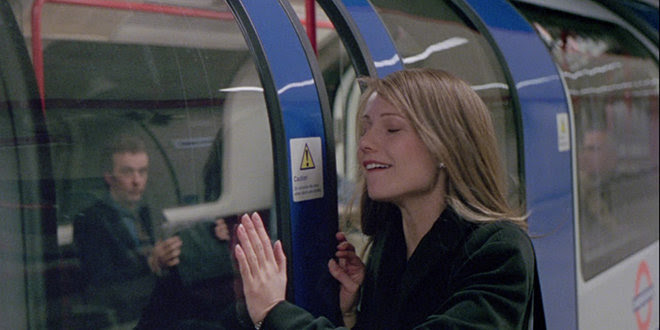The power of "what if"
- melinamoleskis
- Nov 13, 2023
- 3 min read
Have you watched the 1998 film "Sliding Doors"?
It's about two parallel storylines for the protagonist, Helen (played by Gwyneth Paltrow), based on whether she catches or misses a particular subway train. As we witness the unfolding of both narratives, we gain a deeper understanding of the myriad factors that shape Helen's life choices.
The film is a great illustration of counterfactual thinking or, put simply, “what if” scenarios.
Counterfactual thinking
Counterfactual thinking is a mental exercise that allows you to explore alternative scenarios and consider the potential consequences of different choices or events. Engaging in counterfactual thinking empowers you to examine your past decisions by expanding your perspective to encompass multiple frames of reference. This kind of reflection prompts you to break free from biases and tunnel vision, and assess your choices with a fresh and open mindset.
For instance, imagine you missed a crucial deadline on a work project. Reflecting on how putting in extra effort, seeking assistance, or renegotiating the deadline might have impacted the outcome can offer valuable insights. Such introspection allows you to pinpoint influential factors in your decision-making process, like prioritizing personal achievement over meeting deadlines, and identify adjustments for future choices.
Why we intentionally avoid the “what ifs”
While counterfactual thinking can be a valuable tool for gaining insights and improving decision-making, there are several reasons why people may avoid engaging in this type of thinking:
It can cause emotional discomfort. Reflecting on past decisions or imagining alternative outcomes can evoke negative emotions, such as regret, guilt, or disappointment. It can be uncomfortable to confront the possibility that different choices could have led to more favorable outcomes, and some individuals may prefer to avoid these emotions altogether.
It takes considerable cognitive effort. Counterfactual thinking requires mental effort and cognitive resources. It involves mentally simulating different scenarios and analyzing the potential consequences of alternative choices. This can be mentally taxing, and some people may opt for simpler, less demanding thought processes instead.
We have an instinct for self-preservation. Engaging in counterfactual thinking may challenge one's self-perception or ego. It can expose flaws in decision-making or highlight missed opportunities, which some individuals may prefer to avoid to protect their self-esteem. People tend to have a natural inclination to defend and justify their past choices, even in the face of potential improvements.
We have a bias for the present. We tend to overly focus on the present moment and the current reality. This present bias can make it difficult to engage in counterfactual thinking, as it requires mentally detaching oneself from the present outcome and considering alternative possibilities.
Too much uncertainty and ambiguity. Counterfactual thinking introduces uncertainty into the equation. It involves exploring hypothetical scenarios that did not occur and imagining different outcomes. This uncertainty can be uncomfortable for some individuals who prefer to focus on concrete realities rather than hypothetical situations.
Why engage in “what ifs”
Counterfactual thinking is not just about wishful daydreaming; it's about unlocking the hidden lessons buried in the past. By rewinding the tape and envisioning different outcomes, we as managers (or any other roles) can dissect our decisions, analyze missed opportunities, improve risk assessment and planning process, learn to anticipate potential pitfalls, devise foolproof contingency plans, and chart a winning path.
Caution: Dwelling on the past or getting trapped in a web of "what ifs" can be paralyzing. The true magic lies in using this tool as a springboard to transform the present and shape the future.
Applying counterfactual thinking
Business Strategy. Imagine you launched a new product that didn't perform as well as expected in the market. Instead of dwelling on the disappointment, you can use counterfactual thinking to analyze what could have been done differently. For instance, considering alternative marketing strategies, pricing models, or product features can provide insights into potential improvements for future product launches.
Team Dynamics. Within a team setting, counterfactual thinking can be useful for improving collaboration and conflict resolution. For instance, if a project faced significant setbacks due to miscommunication, reflecting on what might have happened if different communication methods were employed can guide future interactions and enhance team effectiveness.
Career choice. Let's say you chose to pursue a particular career path but you often find yourself wondering what might have happened if you had pursued a different field of study or profession. By engaging in counterfactual thinking, you can explore alternative scenarios and imagine the potential outcomes, such as the different opportunities, challenges, and lifestyle that might have unfolded.
Take-aways for counterfactual thinking
Counterfactual thinking is a mental exercise that allows you to explore alternative scenarios and consider the potential consequences of different choices or events.
While there may be reasons to avoid counterfactual thinking, embracing it in a balanced manner can provide valuable insights for personal and professional growth.
You can use counterfactual thinking to make more informed decisions and learn from past experiences. It can help broaden your perspective, enhance problem-solving skills, and inform decision-making processes in various aspects of life.






Comments